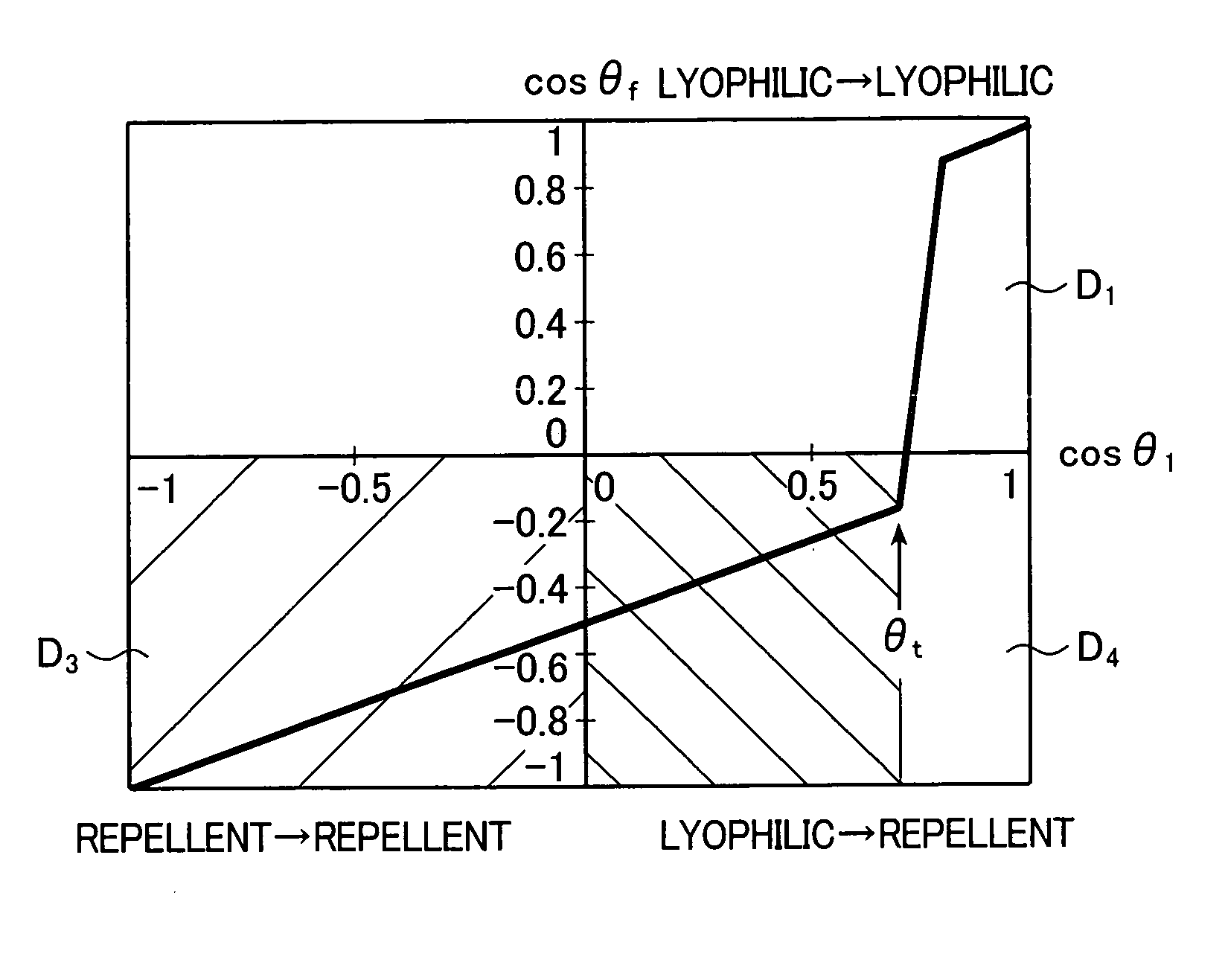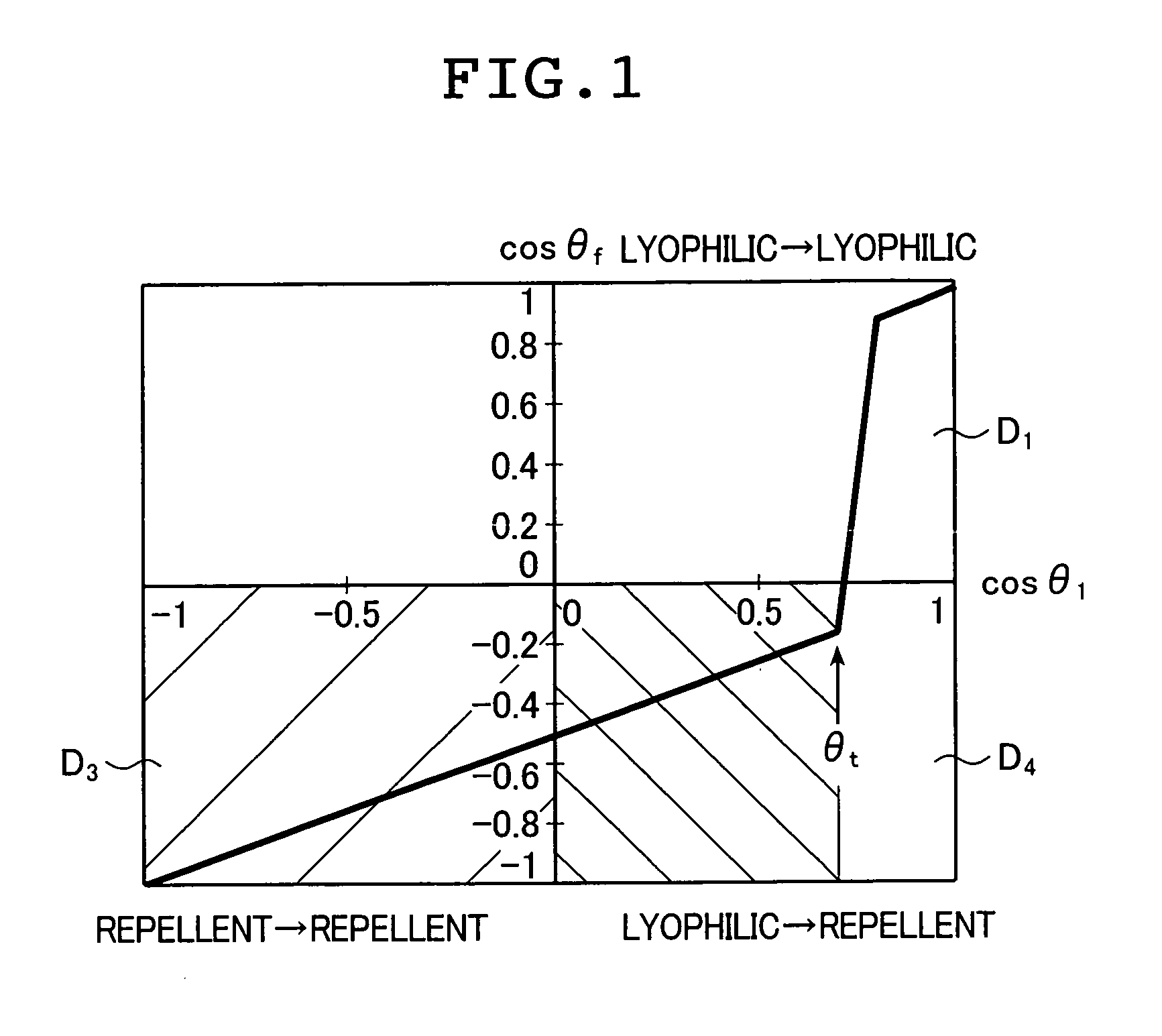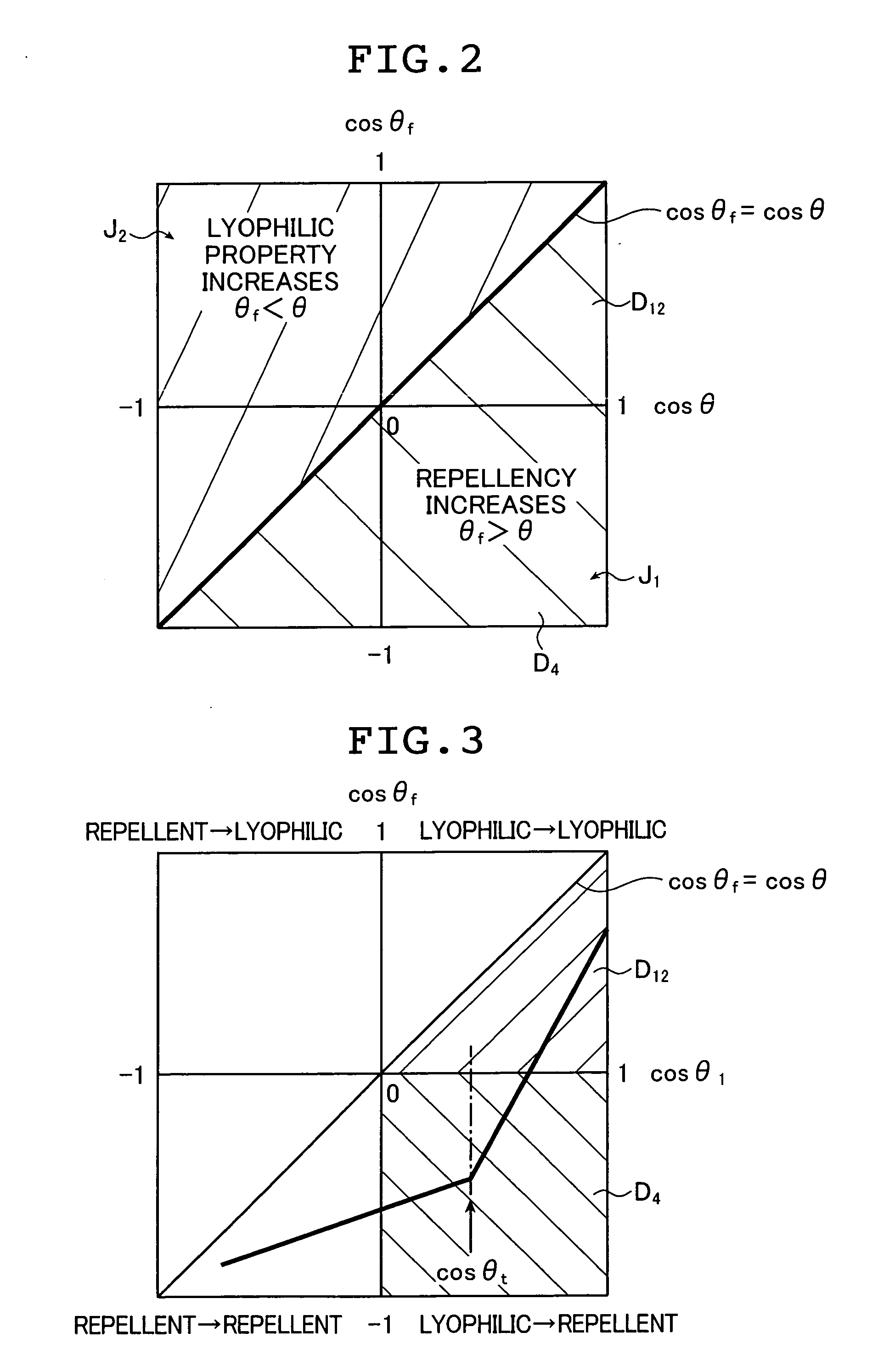Repellency increasing structure and method of producing the same, liquid ejection head and method of producing the same, and stain-resistant film
- Summary
- Abstract
- Description
- Claims
- Application Information
AI Technical Summary
Benefits of technology
Problems solved by technology
Method used
Image
Examples
first embodiment
[0232]FIG. 8 is a schematic perspective-view showing a repellency increasing structure according to a first embodiment of the present invention.
[0233] As shown in FIG. 8, a repellency increasing structure 14 of this embodiment includes: a substrate 16 having a flat surface; and multiple recesses 18 formed on the surface of the substrate 16.
[0234] The substrate 16 has a flat surface and a uniform thickness. The substrate 16 does not exhibit repellency with respect to an organic solvent, oil, or a liquid having a surface tension of 40 mN / m or less in a flat state where nothing is formed on its surface. In this case, the substrate exhibits lyophilic property. That is, the contact angle with a liquid is less than 90°. In addition, the surface tension γS of the substrate 16 is equal to or more than one fourth of the surface tension γL of an organic solvent, oil, or a liquid having a surface tension of 40 mN / m or less.
[0235] Furthermore, the substrate 16 is made of, for example, a poly...
second embodiment
[0251] Next, a repellency increasing structure according to a second embodiment of the present invention will be described. In this embodiment, the same reference numerals are given to the same constituents as those of the repellency increasing structure 14 according to the first embodiment shown in FIG. 8, and detailed description of the same constituents is omitted.
[0252]FIG. 10 is a schematic perspective view showing the repellency increasing structure according to the second embodiment of the present invention.
[0253] As shown in FIG. 10, a repellency increasing structure 15 of this embodiment is different from the repellency increasing structure 14 of the first embodiment (see FIG. 8) in that the shape of the opening of a recess 19 is not a circle but a square. Other features such as the size of the recess 19, an angle α, and an area ratio are the same as those of the repellency increasing structure 14 of the first embodiment.
[0254] The repellency increasing structure 15 incl...
third embodiment
[0257] Next, a repellency increasing structure according to a third embodiment of the present invention will be described. In this embodiment, the same reference numerals are given to the same constituents as those of the repellency increasing structure 14 according to the first embodiment shown in FIG. 8, and detailed description of the same constituents is omitted.
[0258]FIG. 11 is a schematic perspective view showing the repellency increasing structure according to the third embodiment of the present invention.
[0259] As shown in FIG. 11, a repellency increasing structure 15a of this embodiment is different from the repellency increasing structure14 of the first embodiment (see FIG. 8) in that multiple square prism-shaped projections 21 are formed on the surface of the substrate 16 with gaps 23 provided therebetween. Other features are the same as those of the repellency increasing structure 14 of the first embodiment.
[0260] In the repellency increasing structure 15a, an angle β...
PUM
 Login to View More
Login to View More Abstract
Description
Claims
Application Information
 Login to View More
Login to View More - R&D
- Intellectual Property
- Life Sciences
- Materials
- Tech Scout
- Unparalleled Data Quality
- Higher Quality Content
- 60% Fewer Hallucinations
Browse by: Latest US Patents, China's latest patents, Technical Efficacy Thesaurus, Application Domain, Technology Topic, Popular Technical Reports.
© 2025 PatSnap. All rights reserved.Legal|Privacy policy|Modern Slavery Act Transparency Statement|Sitemap|About US| Contact US: help@patsnap.com



